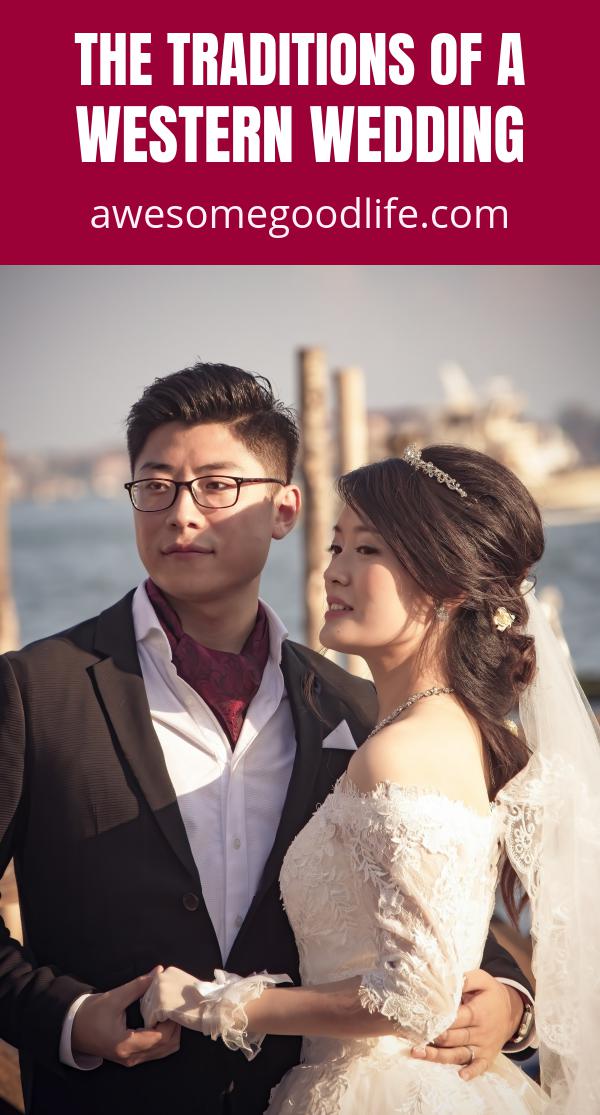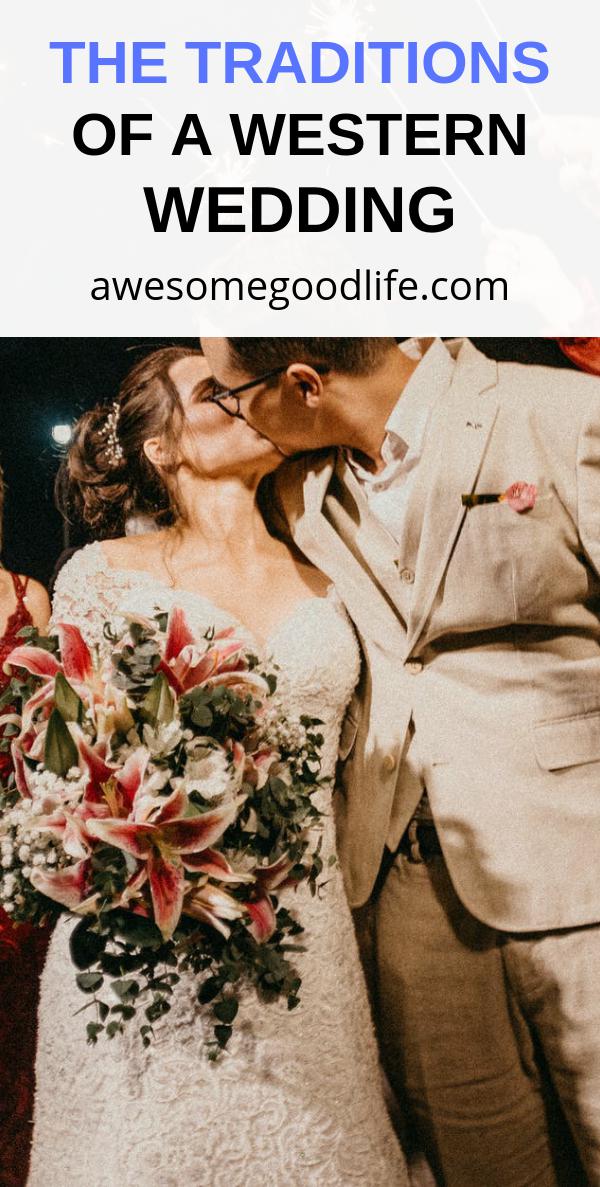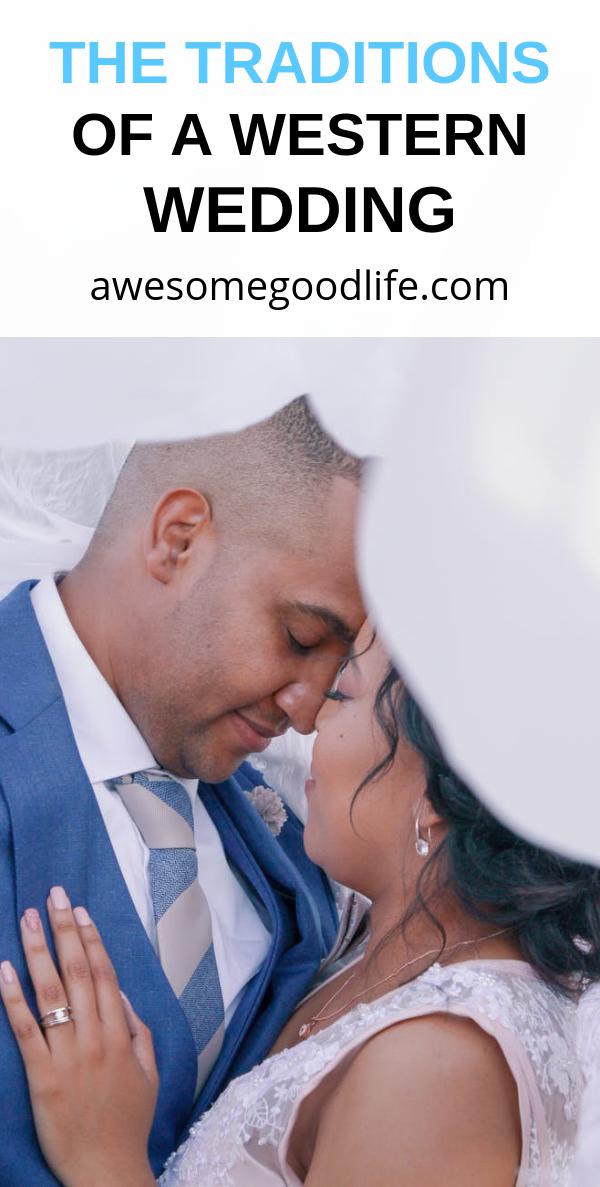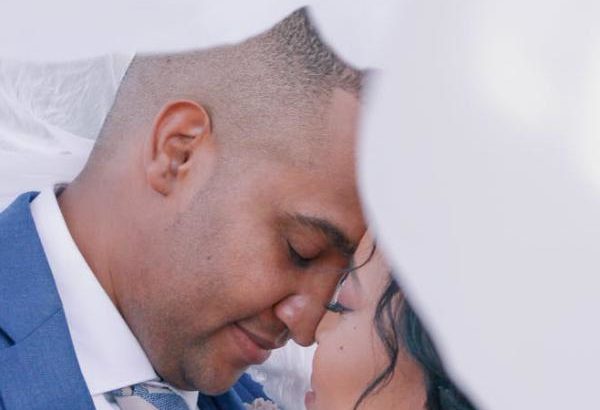For people of Eastern descent, the customs and traditions of a Western wedding may seem odd. In fact, it may appear that there are no distinct characteristics. In truth, part of the Western wedding customs includes freedom and independence to celebrate in whatever manner the bride and groom wish. However, there are a few standard customs that, although they may not be practiced at every wedding, are acknowledged as being traditional.
The traditional clothing worn by the bride is a white gown, usually floor length. The white symbolizes purity but can be adorned with beading or sequence. This is a custom that is still very popular in Western weddings. However, many brides choose variations of the traditional style, such as short dresses or an off-white version. The groom and his party will most often wear black tuxedoes. Traditionally, these are worn with ties; however, many popular styles also have no collar with a button clasp at the neck.

Most often, the bride is walked down the aisle and ‘given away’ by her father. This is a very old custom that is still practiced. However, as families mix and marriages sometimes happen later in life, some brides choose their sons, brothers, or step-fathers to walk them down the aisle.
Other customs of a Western wedding include the bride wearing a garter on one leg, which is removed and thrown to the guests at the end of the wedding. The bride will also throw her bouquet at the end of the wedding; the lucky girl to catch it is said to be the next married. It is also common for the wedding vehicle to be covered with shaving cream, balloons, or cans and messages to be written on the glass to show others they were just married. While the origins of these traditions are unclear, they are stringently adhered to by many in Western weddings.

There is also a rhyme which speaks of a Western wedding custom, something old, something new, something borrowed, something blue, which are all of the things the bride is supposed to wear to her wedding to guarantee good luck. They can be any items that fit in those categories, but all four must be worn at the time of the ceremony.
Traditionally, the bride’s parents pay for the wedding. This is probably based on the dowry customs which are no longer practiced in the West. Much like the old customs, this is steadily fading in Western weddings also.





